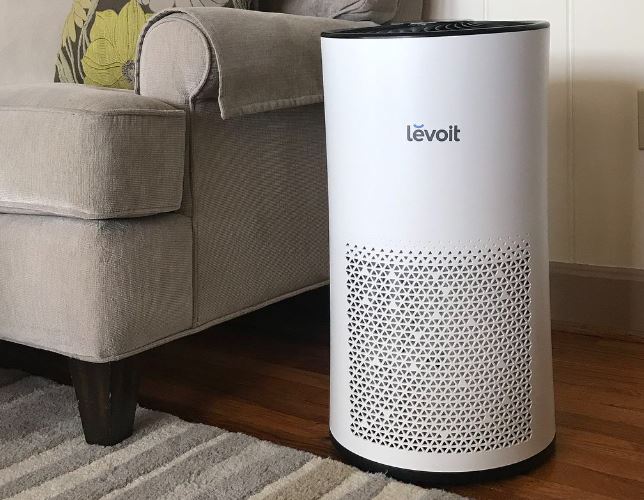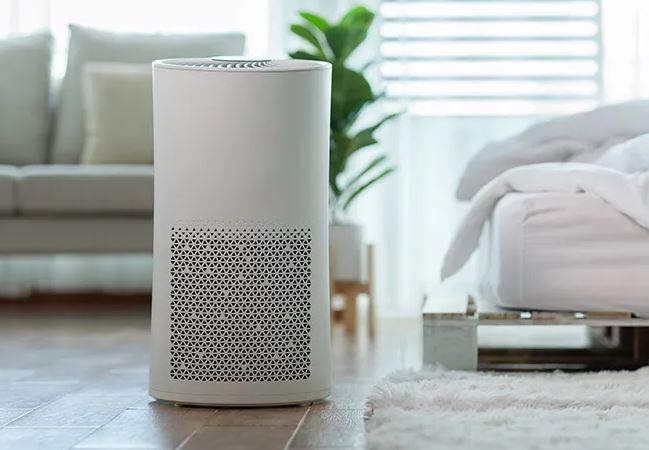Breathe Easy, Sleep Well: How Air Purifiers Can Improve Your Sleep Quality
Wiki Article
In today's health-focused society, the air quality indoors and out has become an increasingly important consideration for many people. With rising pollution levels and a greater awareness of the influence of indoor air quality on overall health on our health, it's no surprise that the demand for air purifiers is on the rise.
Air purifiers are devices that eliminate airborne contaminants in a space, improving indoor air quality. They are especially advantageous for individuals suffering from allergies, asthma, and respiratory conditions as they can significantly lower the levels of allergens, pollutants, and irritants in the air. Even healthy individuals can take advantage of air purifiers, as they offer peace of mind and an extra layer of protection against airborne illnesses.
This guide will dive deep into the world of air purifiers, examining their advantages, the variety of options on the market, crucial aspects to think about when choosing a purifier, and optimizing your purifier's performance. By the end, you should have a thorough grasp of air purifiers and be able to make an informed decision about whether investing in one is the smart move for your household.

Unraveling Indoor Air Contaminants and Their Effects on Well-being
To grasp the importance of air purification, it's key to comprehending the kinds of pollutants they target and the likely impact of contact with these pollutants.
Indoor air pollutants can be broadly grouped into three primary types:
- Airborne Particles: This includes solid and liquid droplets present in the air. Examples include pollen, smoke, dust, pet dander, and mold spores, to name a few. Particulate matter can lead to respiratory complications and set off allergic responses.
- VOCs: A Concern for Indoor Air: VOCs are gaseous compounds released from solids and liquids. Sources of VOCs include aerosol sprays, cleaning products, paints, and pesticides, among others. Exposure to VOCs can lead to eye, nose, throat irritation, headaches, and stomach discomfort.
- Biological Hazards: These include various microorganisms, including bacteria, viruses, mold, and mildew. They can cause a range of health issues, from allergy symptoms to more serious health risks.
The impact of these contaminants on human health can vary significantly. For individuals with respiratory conditions or compromised immune systems, exposure to indoor air pollutants can lead to significant health complications. Even for healthy people, chronic exposure to certain pollutants can increase the risk of respiratory conditions and other health concerns over time.

How Air Purifiers Work
Air purifiers use a combination of physical and chemical processes to capture and remove pollutants from the air. Understanding the basic mechanisms employed by purifiers will help you appreciate their effectiveness and the array of models on the market.
Here are the core processes and cutting-edge technologies used in air purifiers:
- Filtration Excellence: This is the predominant technique used in air purifiers. It involves using filters to trap particles as air is passed through the filtration system. The filter composition can differ, each designed to trap particular particle types. For example:
- Pre-filters: These are usually the first line of attack, trapping bigger contaminants like hair and dust.
- HEPA Filters: The Gold Standard: HEPA filters are exceptionally efficient at trapping tiny particles, including bacteria, viruses, pollen, and dust mites. To be labeled a genuine HEPA filter, it must capture at least 99.97% of particles as small as 0.3 microns.
- charcoal filtration: These filters are designed to effectively remove odors, VOCs, and gaseous compounds.
- Ionizers: Charging Ahead: Ionizers use electrical charges to create an abundance of negative ions, which attach themselves to particles in the air. The charged particles then stick to nearby surfaces or are attracted back to the purifier.
- Ozone: A Powerful Purifier: Some air purifiers use ozone as a powerful cleaning agent. While effective, ozone can also be harmful to human health so these types of purifiers should be used with moderation and in well-ventilated areas.
- Ultraviolet (UV) Light: UV light can be used to neutralize bacteria, viruses, and mold spores. UV light and filters: a dynamic duo to eliminate particles, while UV light ensures any remaining biological contaminants are destroyed.
The Ultimate Air Purifier Guide
With a wide array of options available, selecting the right air purifier can be a daunting task. It's important to consider several factors to ensure you make the best decision for your unique requirements and space.
Here are some essential factors to weigh:
- Considering Room Size: Air purifiers are typically rated according to room size, so it's important to choose a model that can efficiently purify the air in the designated space. Most purifiers will list a suggested room size or CADR rating, which indicates the volume of filtered air delivered per minute.
- Type of Contaminants: Identify the types of pollutants you want to target. If you suffer from allergies, look for a purifier with a true HEPA filter. For reducing unwanted smells, consider a model with a activated carbon filter. If you're concerned about viral and bacterial threats, a purifier with UV-C light might be best.
- Quiet Operation: Air purifiers can produce varying levels of noise, so if you plan to use it in a bedroom or quiet space, look for models with a quiet mode for undisturbed rest.
- Maintaining Performance: Consider the regular maintenance and associated costs of the purifier. HEPA filters generally require replacement every 6 to 12 months, depending on use and environmental factors. Include filter replacement costs in your calculations when making your choice.
- Additional Features: Many purifiers offer intelligent features like wireless connectivity, air quality sensors, and smart modes, allowing convenient remote access and monitoring. These features can enhance the convenience and effectiveness of your purifier.
Unlocking the Full Potential of Your Air Purifier
Once you've made your selection and installed it, there are several things you can do to ensure it operates at peak performance and delivers the maximum benefits:
- Optimal Placement: Position your purifier in an open area, away from walls and furniture, to ensure effective airflow. Avoid placing it near windows or doors as drafts can impact its efficiency.
- Keep it Running: For the best results, it's recommended to run your purifier regularly. Many models have low-energy settings or automatic modes that respond to air quality changes, so you can maintain clean air without running up a huge energy bill.
- Regular Filter Care: Regularly check and replace filters as recommended by the manufacturer. Over time, filters become saturated with particles, affecting efficiency. Mark the date of replacement on your calendar so you don't forget.
- Reducing Indoor Contaminants: Alongside using an air purifier, take steps to minimize indoor air pollutants. This could include vacuuming, dusting, choosing natural cleaning alternatives, and limiting aerosol and chemical products. Report this wiki page